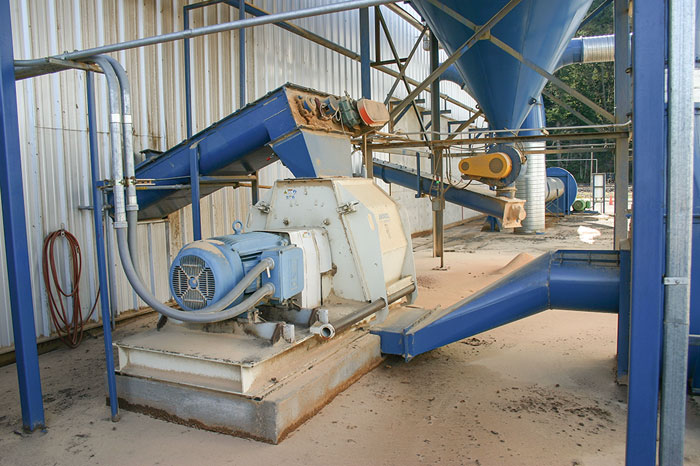Oregon’s Frank Lumber Co., Inc. has produced premium kiln dried lumber products for the last 65 years. The same passionate pursuit of high quality lumber is now devoted to pellet production as well, with the 2008 addition of Frank Pellets LLC and its brand name Packsaddle Pellets.
“We don’t strive to be the biggest,” Frank Lumber Co. President Jim Frank says of the 20,000 ton/year operation. “But we do strive to make the best pellet. A big advantage we have is complete control of the raw material from the woods to the pellet mill. We’re not dependent on anyone else and we don’t buy any outside material.”
Like most other sawmills in the region, Frank Lumber had for years sold its chips to paper mills and planer shavings and sawdust to composite board manufacturers. About 10 years ago the mill began selling shavings and dust to a pellet manufacturer who raved about the raw material’s quality.
“We did that for a while and decided we could do it ourselves, add some value to our residuals and create some new jobs,” Frank remembers. In addition, tax incentives at the time for both green energy producers and consumers made the project even more attractive.
“It seemed like a natural for us,” Frank says. “Plus we had the tax savings and created eight new jobs.”
The pellet plant went in summer 2008, and started up in fall 2008.

Andritz hammermill handles raw material reduction processing.
Project
A major factor in building the pellet facility was designing it to use only in-house residuals as feedstock. “We didn’t want to build a pellet mill then have to go out and buy the raw material to feed it,” Frank says.
The engineering group PM Hagel & Associates was hired to help with design and machine decisions. (PM also designed the pellet plant’s baghouse.) Frank Pellets personnel toured other pellet facilities, picked a site adjacent the sawmill and started out with a 100x250 ft. plant and storage building, plus a 60x100 ft. raw material building (since enlarged).
The pellet plant began operations fed by planer shavings from lumber that was already dried to 12% MC. In 2011, the plant began utilizing sawdust as well, which meant adding an Onix rotary triple-pass dryer to handle the extra volume and green material.